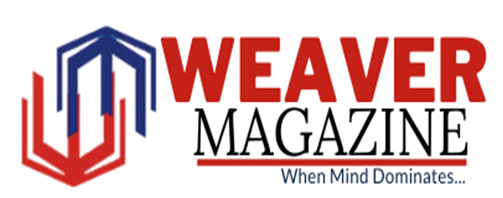They’re the secret sauce behind your jaw-dropping game moments. From the crisp reload of a weapon in a shooter to a character’s slight shoulder slump after defeat, a game animation studio builds the pulse of your game’s world. Studios aren’t just “animators” moving figures on screen.
They are movement architects, emotion translators, and crucial partners in shaping your game’s identity, especially in AA vs AAA games, where animations can make or break immersion.
When you see your hero leap across a collapsing bridge, every breath, blink, and footfall is planned and tested inside a game animation studio. But what exactly happens inside these studios that transforms a lifeless rig into a living, breathing character that players connect with instantly?
Let’s walk inside.
The Core Role of a Game Animation Studio
At its heart, a game animation studio crafts movement that feels real and engaging while aligning with the game’s mechanics. They take a developer’s vision and translate it into fluid animations that sync seamlessly with gameplay.
In AA vs AAA games, this process scales dramatically. For AA games, animation studios may work with smaller rigs and limited scope, focusing on essential movements with style and clarity.
For AAA projects, the studio might handle entire motion capture sessions, cinematic sequences, and high-fidelity character performances, ensuring the game competes at the industry’s highest standards.
Bringing Characters to Life
Before an animation can even begin, a game animation studio studies character designs, the game world, and gameplay mechanics. They consider weight, physics, and personality traits, ensuring each animation is more than a movement—it’s a story in itself.
They use advanced rigging systems, keyframe animation, and motion capture data to blend realistic movements with the artistic style of the game. A hero’s quick dodge or a villain’s menacing walk cycle gets tested repeatedly to ensure it “feels” right under player control.
Building Immersion in Game Worlds
Animation studios don’t only animate characters. They handle environment animations like swaying trees, flickering lights, and destructible elements that create a living world. These tiny details are critical in AA vs AAA games, where environmental interactions increase player immersion.
A game animation studio also collaborates with level designers and gameplay programmers to ensure animations align with mechanics. For instance, if a game’s mechanic involves wall running, the studio will create animations that not only look fluid but also fit the game’s physics system and timing constraints.
The Power of Motion Capture in Game Animation Studios
Motion capture (mocap) is a staple for a game animation studio working on high-quality projects. Using real actors in mocap suits, studios record movements and facial expressions to bring authenticity to characters.
In AAA games, motion capture becomes a massive operation with entire studios dedicated to capturing actor performances from body movement to micro-expressions, later refining them to blend seamlessly with the game’s stylized or realistic graphics.
Enhancing Player Connection
Facial animations can define how players emotionally connect with characters. A game animation studio carefully polishes these details, syncing them with voice acting and cinematic storytelling. They make sure the slightest eyebrow raise or lip movement conveys intention, urgency, or subtle humor, helping players believe in the characters they play or fight alongside.
Collaborative Workflow Inside a Game Animation Studio
Game animation studios don’t work in silos. They actively communicate with concept artists, game designers, audio teams, and programmers. This collaboration ensures animations don’t break the game’s flow.
They refine the player’s attack animations to match hitboxes, adjust NPC behaviors to reflect AI changes, and coordinate camera angles to enhance in-game cinematics, especially in AA vs AAA games where camera control can define the gameplay experience.
Optimizing for Platforms
A game animation studio also focuses on optimization, ensuring animations run smoothly across various platforms from high-end PCs to consoles. They clean up frame data, compress files without losing quality, and test animations under multiple gameplay scenarios.
The Pipeline Process in a Game Animation Studio
Inside a game animation studio, nothing happens randomly. Studios operate through a well-defined pipeline to maintain consistency, quality, and efficient delivery. The process often includes:
- Pre-visualization: Sketching movements and creating rough animatics to define timing and flow.
- Blocking: Establishing the major poses in animations to test the movement’s believability.
- Refining: Adding secondary motions, facial expressions, and adjusting curves for fluidity.
- Polishing: Final tweaks to finger movements, clothing physics, and micro-details that elevate the animation quality.
In AA vs AAA games, this pipeline scales based on project scope. An indie AA title might have a few animators working across all stages, while a AAA project will have dedicated teams handling each phase, ensuring the highest standards for each animation pass.
Specialized Roles Inside a Game Animation Studio
A game animation studio houses diverse specialists:
- Character Animators: Focused on lifelike or stylized movements.
- Technical Animators: Bridge the gap between rigging and animation, troubleshooting rigs, and implementing animation in engines like Unreal or Unity.
- Cinematic Animators: Handle cutscenes and in-game cinematics, ensuring seamless storytelling.
- Creature Animators: Design and animate non-human characters, adding weight and personality to monsters or animals.
By dividing roles, studios maintain the quality of each animation aspect while ensuring that every frame contributes to gameplay, narrative, and immersion.
Game Animation Studios and Their Role in Combat Systems
Combat-heavy games, especially in the AA vs AAA games debate, require a game animation studio to create responsive and readable animations. Attack wind-ups, combo chains, dodge rolls, and parries need precise timing and visual clarity to help players anticipate and react during combat.
Studios carefully test hit reactions, attack animations, and death animations to ensure they align with gameplay mechanics, contributing to a satisfying combat feel. They work closely with combat designers to adjust frame data to match the combat system’s needs, maintaining the game’s flow while ensuring visual clarity.
Animation Testing and Player Feedback Loops
A game animation studio doesn’t consider a job done once the animation is implemented. Testing is a continuous process, using both automated and manual testing in live environments to catch bugs like clipping issues, unnatural transitions, or animations not syncing correctly with player inputs.
Player feedback also plays a role. Studios analyze feedback to refine animation speed, clarity, and impact, crucial in AA vs AAA games where community perception can influence a title’s reputation.
The Importance of Style Consistency in Game Animation Studios
Animation is not only about technical execution but also about maintaining the game’s stylistic consistency. A game animation studio ensures all animations match the art direction, whether a game leans toward hyper-realism or a cartoony aesthetic.
In AAA games, studios often develop style guides, ensuring animations stay consistent across large teams working on different characters and environments. This consistency is what allows games to feel cohesive, regardless of scale.
Why a Game Animation Studio Is Critical for Game Success
A game animation studio brings technical expertise, artistic vision, and an understanding of player experience to your project. They transform static assets into dynamic, breathing characters and environments, amplifying immersion.
For indie developers working on AA vs AAA games, partnering with an experienced game animation studio can elevate a project, helping it stand out in a competitive market. It’s not just about movement but about emotional storytelling, player connection, and seamless integration with gameplay systems.
Final Words
A game animation studio is the unsung hero behind the games players love. From testing movement weight to crafting lifelike expressions, studios ensure characters resonate, combat feels impactful, and the world feels alive.
As AA vs AAA games continue to push the boundaries of player immersion, the role of a game animation studio grows even more vital.
Whether you are an indie developer looking to add professional polish to your game or a studio aiming for the highest production quality, understanding and valuing the contribution of a game animation studio will shape your project’s success.










